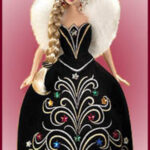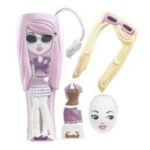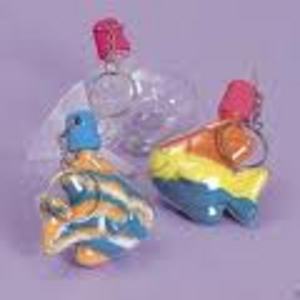Some gender stereotypes and perceptions have been embedded within American culture for decades. The continuation of these stereotypes and perceptions may be attributed to the media and mass culture, which have been known to utilize stereotypes for various purposes. One of the ways gender stereotypes have been implemented and maintained is through children’s television commercials, in which advertisers develop marketing techniques that appeal to stereotypes of boys and girls in order to sell a product. Through the analysis of text and observation of linguistic features in Barbie Commercials and G.I. Joe commercials from several decades, it is evident that children’s television commercials utilize gendered language and that these commercials have an effect on children’s perceptions of gendered appropriateness.
In an article entitled, “The Effects of Commercials on Children’s Perceptions of Gender Appropriate Toy Use,” authors Jennifer Pike and Nancy Jennings illustrate that children’s exposure to toy commercials infused with gender stereotypes have an effect on both the viewers’ behaviors and toy preferences. The authors conducted a study in which 62 first and second grade elementary school students from an upper-middle class suburb of a large mid-western city observed one of three sets of commercials. Two of the sets were experimental, while the third was the control. Two toy commercials depicting all boys playing with Harry Potter Legos and Playmobil Airport Set were the commercials selected for the experimental groups (the authors justified their use of Harry Potter Legos because, while it is a toy involving a male character, both building blocks and the popular book series appeal to both genders) (Pike 86). Two non-toy commercials, Chuckie Cheese restaurants and Lucky Charms cereal commercials, and two public service announcements, all with equal gender representation, were chosen to give the sense the viewers were experiencing regular television viewing. The Harry Potter Legos and Playmobil Airport Set were the only manipulated commercials, due to the focus of the study: researchers placed girls’ faces (with feminine features) over the boys’ faces, deeming this a nontraditional group of commercials. In the other experimental group, the children were shown traditional commercials, in which the toy commercials were not manipulated. In the control group, commercials for Sunny Delight and Capri Sun were substituted for the toy commercials. Ten children of both sexes constituted the groups, and each group was assigned to either an experimental or control group. After children viewed the three-minute tape, each child was given three cards with the word “BOY,” “GIRL,” and “BOTH BOYS AND GIRLS” written on them. Each child was asked to determine if a picture of a toy is for boys, for girls or for both boys and girls.
The study found that, of the children who were in the traditional commercials group, 60 percent (15) reported that the Harry Potter Legos were for boys instead of for both boys and girls, and 56 percent (14) said the same was true for the Playmobil Airport Set. Of the children who viewed the nontraditional commercials, 42.3 percent (about 10) said Harry Potter Legos were for boys and 15.4 percent (about 3) said the Playmobil Airport Set was for boys. Interestingly, 57.7 (about 14) percent of this group also said the Harry Potter Legos was for both boys and girls, and 76.9 percent (about 19) said the Playmobil Airport Set was for both boys and girls. These results support the hypothesis that children in the nontraditional commercials group reported that the toys were for both boys and girls more frequently than the children in the traditional commercials group (Pike 87).
Overall, the study found that the gender of other children in toy commercials has an impact on children’s perceptions of what gender should play with the toy. Nontraditional images were more likely to allow children to perceive that the presented toys are for both boys and girls, a significant conclusion when considering the limited exposure children have to these nontraditional images. The study also concluded that children are exposed to stereotyped images through the toy commercials, similar to previous studies that found exposing both adults and children to counter-stereotypical portrayals can help foster less traditional and stereotypical gender role perceptions (Pike 88).
This study can be used as the foundation for further research of toy commercials’ influence on children’s gender perceptions. Having established that the image of gender in toy commercials can shape gender perceptions, the overall hypothesis can be changed to question whether the language in toy commercials can also have an effect on children’s image of gender. Looking at children’s toy commercials throughout several decades may help either prove or disprove this hypothesis. Two toys that have existed for several decades that are pertinent to this analysis are Barbie dolls and G.I. Joe action figures – their classifications as either dolls or action figures are indicative of some gender stereotypes themselves. But perhaps a more productive aspect to consider is the language used in the commercials.
The year 1959 brought about the first ever Barbie commercial, in which a petite blond doll in feminine attire holding a bouquet of flowers is introduced along with fashion accessories by a woman singing a soft jingle throughout most of the commercial. In the jingle, the woman describes the doll as beautiful twice, small and so petite, and her fashions as dazzling, neat, and gadgets that gals adore. The last verse of the jingle is:
Someday I’m gonna be, exactly like you,
Til’ then I know just what I’ll do,
Barbie, beautiful Barbie,
I’ll make believe that I am you.
The words used to describe the doll and her fashions are all feminine, but perhaps the most striking aspect of the commercial is that assertion that young girls (the target audience) would model themselves out of a doll that had no real introduction other than the comments that she was beautiful and had many clothes.
Nine years later, another Barbie commercial was released advertising Talking Barbie. Interestingly, this commercial also features Ken, a doll intended to be Barbie’s love interest. The commercial features two sentences that Barbie has been manufactured to speak: “Would you like to go shopping?” and “I love being a fashion model.” There was, and still is, a gender stereotype that shopping is an activity that belongs to women, which may be exemplified in this commercial aimed at young girls. The second sentence is interesting when considering the presence of Ken. Whether it intends to or not, the commercial can be considered to draw a correlation between being a fashion model (ie., being physically beautiful and embodying the idea of perfection) and attracting a member of the opposite sex. This stereotype that women are “made to be beautiful” is nothing short of longstanding.
In 1971, a Barbie commercial began with a small girl playing with her doll, and then dreaming the same dreams that Barbie does. Some of these dreams included cheering for Ken at the football game, going on a winter holiday with Ken, going to prom with Ken, graduating, going to a masquerade ball with Ken, and being a nurse to Ken (who is a doctor). It is quite obvious that all but one of these dreams involve supporting Ken. It is significant to consider whether ideas like this have helped shaped the stereotype that women are submissive and passive when compared to men.
A 2007 Barbie commercial featured Teen Top Model Barbie, a doll with an abundance of fashion accessories who appears to be living an idealized life. It is interesting to note that the theme of the doll is again a model, similar to the 1968 talking Barbie referenced above. The jingle in the commercial is also interesting, as it encourages the target audience (young girls) to “Be B-A-R-B-I-E.” This is significant because it is again furthering the perception that physical beauty is something young girls should strive for.
As a comparison, G.I. Joe commercials’ target audience is young boys, and offers a much different linguistic pattern than the Barbie commercials. One of the first commercials was created in 1966, and featured the soldier as well as two young boys playing with him and his accessories. Throughout the 59-second commercial, there were nine words of phrases related to violence or aggression, including “fighting man from head to toe,” “terrific battle,” and “G.I. Joe attack.” This number of words and phrases in this length of time is significant when considering the gender stereotype that men tend to be more aggressive or violent.
G.I. Joe commercials throughout the next few decades tended to feature the same linguistic features. A 1991 G.I. Joe commercial advertised the action figure with a weapon that actually fired for the first time. The toy feature “three missile launches” and a rapid firing gun to battle targets.” By 2002, the G.I. Joe commercials emphasized the significant battle between good and evil, in which G.I. Joe prevails as the “real American hero.” This perception that soldiers and position of heroism are reserved for men is evident in the absence of any female references in any of the commercials, as opposed to the Barbie commercials that alluded to Ken. There was, however, one girl toy from the G.I. Joe toy line: Cover Girl, an ex-fashion model who joined the army to seek new challenges in life and prove she was more than just a pretty woman. While this is a notable addition and objection to the stereotypical aspects henceforth discussed in G.I. Joe commercials, the character was not given the same treatment as the male characters. Only two action figures of Cover Girl were released, the first in 1983 and the second in 2005. In addition, her appearance in the G.I. Joe miniseries evolved – initially she had long, blond hair that was cut short and changed to brownish-red. Her eye color changed to brown, and her personality developed a more tomboy attitude.
In considering whether toy commercials like the ones presented have an effect on gender perceptions and stereotypes, it is important to consider the stereotypes that were addressed as well as the study previously addressed. The Barbie and G.I. Joe toy commercials have remained fairly consistent throughout several decades, each presenting an almost dichotomy between men and women. While gender stereotypes and perceptions have both changed and progressed since the introduction of these toys and their respective commercials, some of the gender stereotypes remain relatively the same. For example, the stereotype that women enjoy shopping while men enjoy fighting was a constant theme throughout the commercials and their progression, but it is still a stereotype that exists today.
So what does this mean for children who are viewing the commercials? As shown in Jennifer Pike’s study, children’s perceptions are influenced by toy commercials, including gender perceptions that may help to create and accept gender stereotypes. Linguistic features that stress physical beauty in women’s commercials may lead children, both boys and girls, to assume physical beauty is one of the more significant aspect of being a woman. In addition, linguistic features that stress aggression and violence may lead both boys and girls to assume a man’s job is to protect and assert himself. In making these assumptions, this may lead children to think that people who embody the other (for example, a woman soldier or a male hairdresser) are not following the established gender societal standards. If this is accurate, traditional gender stereotypes and perceptions will continue, with those possessing qualities embodying the other becoming stigmatized and ostracized.
Works Cited
Pike, Jennifer J., and Nancy A. Jennings. “The Effects of Commercials on Children’s
Perceptions Of Gender Appropriate Toy Use.” Sex Roles 52.1/2 (2005): 83-91.




